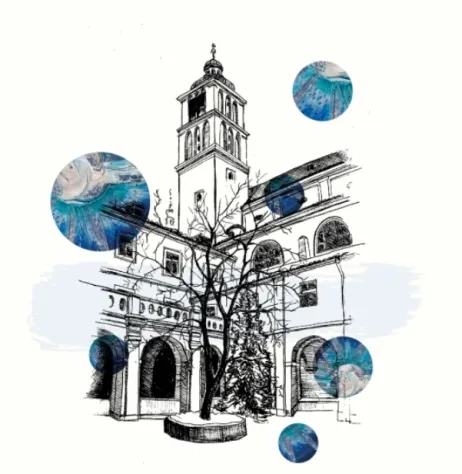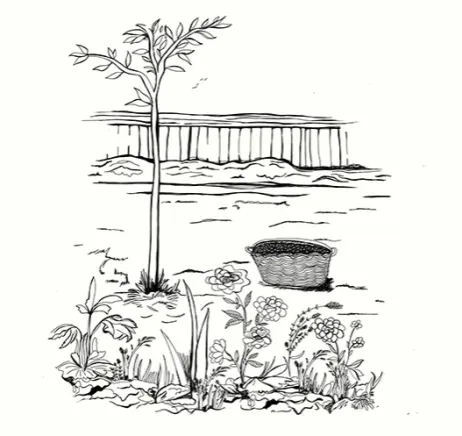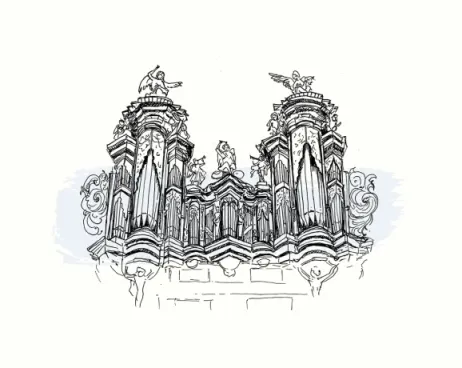
About friary
The Church of St. James the Greater (also known as St. James the Elder) and the Minorite friary are located opposite the exit from Ungelt on Malá Štupartská and Jakubská streets. It was founded by Wenceslas I in 1232, probably in connection with the establishment of Prague's Old Town. The church and monastery are among the most interesting historical monuments in Prague. They combine architectural styles ranging from Gothic to High Baroque. This magical place was closed to the public, except for educational and musical activities. In 1319, John of Luxembourg began building an elongated three-nave basilica with a long and high chancel and two front towers. This Gothic cathedral was completed by Charles IV in 1374. The vault reached a height of almost 30 meters and, after St. Vitus Cathedral and the Church of Our Lady of the Snows, it was the longest cathedral in Prague. It became a place for ceremonial celebrations, but also for the funerals of monarchs. In 1311, the wedding feast of John of Luxembourg and Elizabeth of Premyslids was held here, and around 1337, the wedding feast of John of Luxembourg and the French princess Beatrice. Later, Charles IV also worked here, and as Margrave of Moravia, he issued his privileges to the people of Prague from here. In 1378, the body of Charles IV was laid out here on a magnificent catafalque surrounded by five hundred candles, and in 1577, Emperor Maximilian II was temporarily buried here. After a fire in 1689, the church underwent Baroque modifications.
The choir loft houses an organ dating from 1705. St. James's Church is also famous today as a concert venue where organ concerts are held. Various legends are associated with St. James's Church: the statue of the Virgin Mary on the main altar was once considered miraculous. Therefore, it was worshipped and adorned with gifts. Once, a thief locked himself in the church so that he could steal the gifts. When he wanted to take a string of ducats, the statue's hand grabbed him tightly and held him until morning, when he was found at the scene of the crime. The abbot of the monastery asked the statue whether his hand should be cut off. At this question, the statue immediately released its grip, and the hand was indeed cut off and still hangs blackened on a chain in the church to this day. The thief was imprisoned and then begged to be allowed to serve in the monastery as the lowest servant.
Another legend is connected with Vratislav Václav of Mitrovice. He dreamed that he died and came back to life. Therefore, he stipulated that after his death, his heart should be pierced with a needle. However, the barber, who loved him, was unable to do so. When the count was buried, he was only apparently dead and actually came back to life in the tomb. He banged on the tombstone with the lid of the coffin in vain. When the monks found out and removed the tombstone, they found the count's dead body lying next to the coffin with a look of horror on his face.
On March 20, 1974, Pope Paul VI granted the Old Town Church of St. James the Greater (also known as St. James the Elder) the honorary title of Minor Basilica.

HORTUS ANGELICUS GARDEN
It is the year 1360, and among others living at the court of Charles IV in Prague is his personal pharmacist, or imperial apothecary, Angelo of Florence. The focus of treating various ailments at that time was on medicinal herbs. Angelo of Florence is a great connoisseur of herbs, and Charles IV (1316-1378) creates conditions for their cultivation. Both approached their intention in a very generous manner, and the original idea of creating a herb garden gave rise to a rather extensive garden, which was more like a botanical garden. Charles IV allocated more than 1 hectare of land to the garden and "endowed it with excellent plants." He therefore established a foundation to ensure its financing. The garden was named Hortus Angelicus - Angel Garden after its founder and was the first of its kind in Central Europe. It was located within the walls of Prague's New Town and occupied a quarter of the block between today's Wenceslas Square and Politických vězňů Street, formerly Bredovská Street. Charles IV often visited the garden and enjoyed spending time there; it was a natural oasis within the safety of the city walls.
The herbs grown in the Angel Garden corresponded in their healing properties to the known health problems of Charles IV. We honor this tradition through the exceptional and original products in the Eternal by Helena collection.

ST. JAMES' ORGAN
This unique organ, with the largest number of pipes in Czechia, is admired by music lovers from all over the world and played by top organists during the international organ festival. The beautiful carved organ case from 1705 is the work of the famous Czech organ builder Abraham Stark from Loket. The organ itself has undergone several modifications over the centuries. A major reconstruction took place in 1941 according to a design by B. A. Wiedermann. This created a large romantic instrument. The last extensive reconstruction was carried out in 1981-82 by the Varhany Krnov company, when the organ acquired its current form, with 4 manuals, 91 registers, and 8,277 pipes, allowing it to interpret organ works from all stylistic periods.
Rumors
There are various legends associated with St. James' Church. The statue of the Virgin Mary on the main altar was considered miraculous, so people from far and wide worshipped it and it was also adorned with gifts from believers. This made it attractive to thieves, and one day a thief even had himself locked in the church so that he could steal these gifts. However, when he tried to take the string of ducats, the statue's hand grabbed his hand tightly and held it until morning, when he was found at the scene of the crime. The abbot of the monastery asked the statue whether the thief's hand should be cut off. At this question, the statue immediately released his hand. In the end, the thief's hand was indeed cut off. To this day, it hangs blackened on a chain in the church. The thief was also punished with imprisonment and later begged to be allowed to serve in the monastery as the lowest servant.
When the count was buried, however, he was only apparently dead and actually came back to life in the tomb. He banged on the tombstone with the lid of the coffin in vain. When the monks removed the tombstone, they found the count's dead body lying next to the coffin with a look of horror on his face.
Another legend is connected with Vratislav Václav of Mitrovice. This terrifying story began when the count once dreamed that he had died and come back to life in his grave. He therefore stipulated that after his death, his heart should be pierced with a needle. However, the barber, who loved him, was unable to do so.
 English
English
 Čeština
Čeština